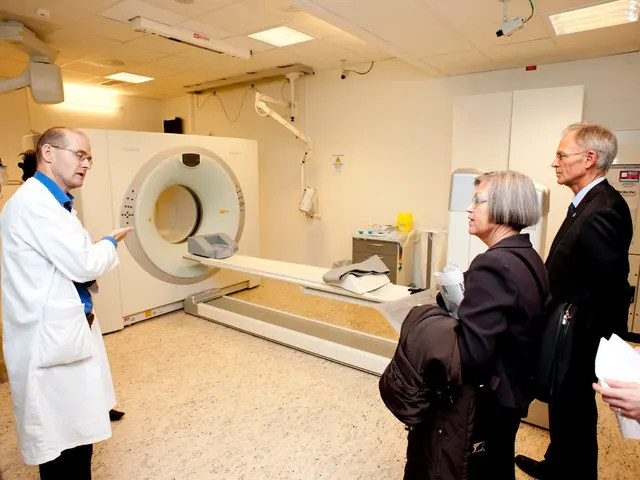Current Scene: The Ascendancy of Private Medical Centers in Saxony-Anhalt
Increased number of healthcare facilities in Saxony-Anhalt - Expanded Healthcare Facilities in Saxony-Anhalt
Spark some curiosity, huh? Let's dive into it!
The landscape of medical care in Saxony-Anhalt has undergone a noticeable transformation, with the number of Medical Care Centers (MVZ) skyrocketing from 74 facilities in 2019 to a whopping 111 by the end of 2024. State MP Nicole Anger (Left) shed light on this shift in a parliamentary question. Here's a lowdown on the distribution: Halle and Magdeburg lead the pack with 23 and 19 MVZs respectively, followed closely by the Harz and Burgenland districts with 12 and 11 MVZs respectively.
But why's everyone's brow furrowing? Well, it turns out that this expansion has seen an increasing number of privately-owned MVZs, and that's where the trouble starts, according to Anger, who's also the health policy spokeswoman of the Left faction. The concern? Profit is seemingly taking precedence over health needs in the new profitable specialists like surgery, orthopedics, radiology, and dentistry.
"The situation in Salzwedel town of Altmark district is dire," says Anger. She argues that both MVZs and a robust hospital infrastructure are absent, leaving the north of the state without reliable medical care for long. The state, as per Anger, needs to step in and fix these supply gaps.
But hang on, aren't there communally-owned MVZs in Saxony-Anhalt? Apparently not. As per a response to the parliamentary question, there isn't a single communally-owned MVZ in the state and no municipality is currently pursuing the idea. You'd think the state budget would have some funds allocated to promote these MVZs, right? Wrong. None is allocated currently.
Unlike your typical doctor's practice, MVZs are organizationally separate from ownership. Doctors are usually employees there. According to the Federal Ministry of Health, MVZs can be run as interdisciplinary or group-practice facilities.
Now, why does this matter? Well, it's a broader concern across Germany. With rising costs, demographic changes, and high demands for quality care, innovative healthcare models, including private MVZs, are on the rise. However, the increase of private MVZs in rural regions, like Saxony-Anhalt, can lead to supply bottlenecks and a lack of healthcare providers, making access tricky.
The lack of communal MVZs in rural areas is a common issue in Germany, leading to inadequate healthcare access for local populations. But worry not, there are potential solutions in the pipeline!
Over to the proposed fixes: Developing new care models, integrating technology, enhancing collaboration, and education programs for healthcare professionals can help ensure long-term patient care. Encouraging public-private partnerships, expanding telemedicine services, and engaging local communities can help tailor solutions to specific regional needs. So, it's not all doom and gloom, is it? Let's hope for some much-needed change!
- The rise in private Medical Care Centers (MVZs) in rural regions, such as Saxony-Anhalt, could benefit from community-owned MVZs, as lack of communal MVZs is a common issue across Germany, leading to inadequate healthcare access for local populations.
- As the landscape of medical care evolves, pioneering healthcare models, like vocational training programs for healthcare professionals, could play a crucial role in ensuring long-term patient care and addressing the disparities created by the expansion of private MVZs.
- In the face of mounting costs, demographic changes, and high demands for quality healthcare, it's essential to consider policy-and-legislation and politics that may encourage the integration of technology, collaboration, and education within healthcare systems, which can yield improved health-and-wellness outcomes for communities while navigating medical-conditions effectively.








